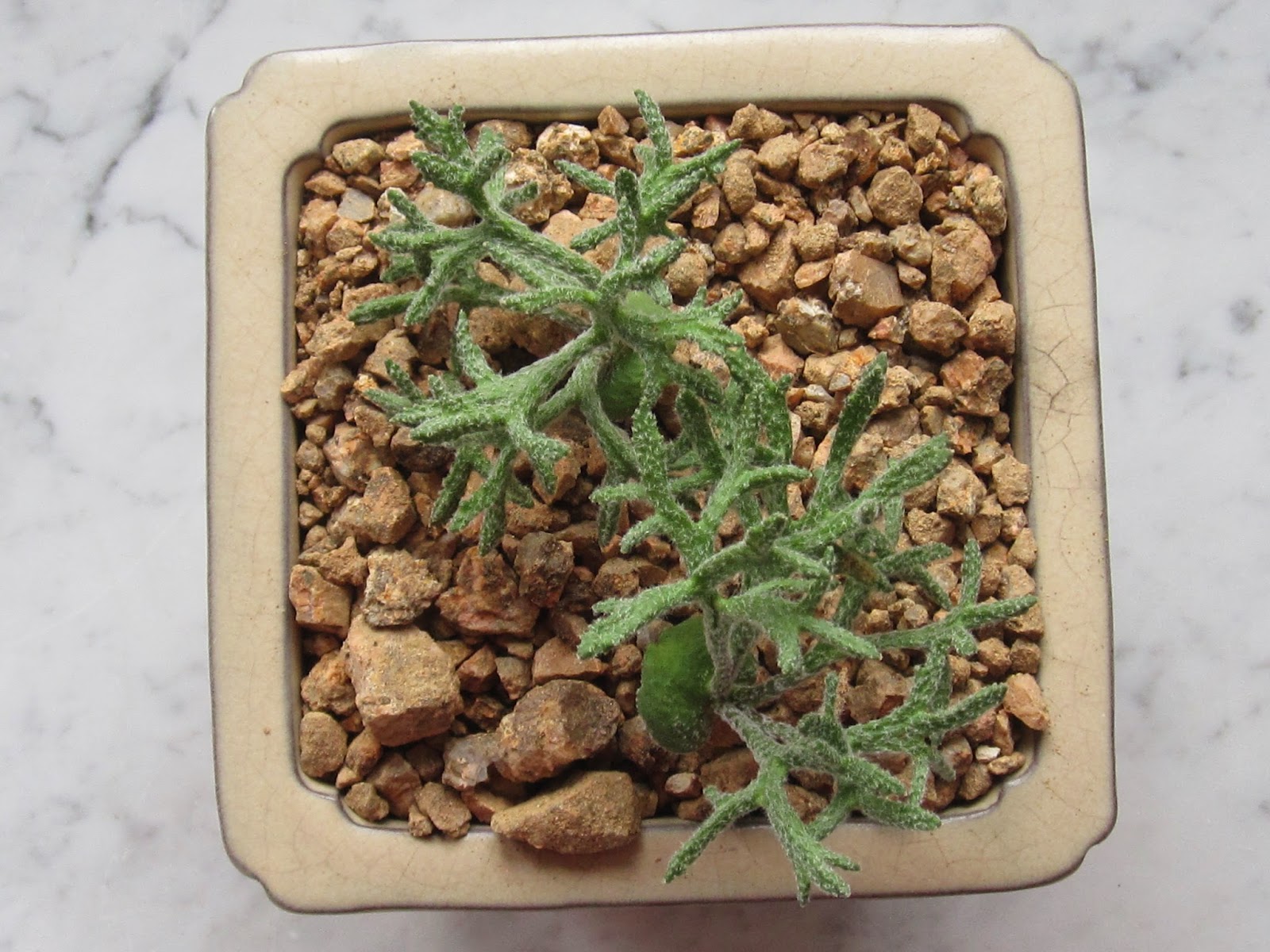This is ERIOSPERMUM CERVICORNE - says the gardener - but E. DREGEI looks very much the same. So I am very suspicious if this is the species.
systematics
The family ERIOSPERMACEAE seems to be a lonely standing family among other families of the class MONOCOTYLEDONEAE.
Under the MONOCOTYLEDONEAE you might find bananas, bromeliads, grasses and weeds, lillies, orchids, palms and others.
Other botanist have placed the plants into the family ASPARAGACEAE, CONVALLARIACEAE or RUSCACEAE.
E. CERVICORNE and E. DREGEI are placed in the genus ERIOSPERMUM Jacquin ex Willdenow, subgenus ERIOSPERMUM Perry, section ERIOSPERMUM Perry.
Perry lists 102 species of ERIOSPERMUM.
plants
The plants do not build up bulbs but potato-like underground tubers. They are geophytes.
The flowers look like those of ALBUCA, LILIACEAE, and the hair-covered seeds are similar to those of TILLANDSIA, BROMELIACEAE. This latter characteristic gives the genus its name.
culture
The species grows in Namaqualand, South Africa, on hills of granite in crevices.
There are species that grow in winter rain areas and others that dwell in summer rain areas.
E. CERVICORNE and E. DREGEI are growing in the winter rain areas - southern earth. They will adopt to our climatical cycle and therefore they grow in our winter - northern earth - too.
I have planted them in my normal mineral substrate covering the top level with GRANIT gravel. I have added no peat to my mineral substrate mix.
I offer them as much sun and warmth as possible and fertilize and water them about every 2 to 4 weeks. The plants do not need that much water.
The growing cycle begins with the flowering, and only thereafter the leaves will show up. My plants start flowering and growing in August or September.
Around March or April the resting period begins and lasts around half a year long.
systematics
The family ERIOSPERMACEAE seems to be a lonely standing family among other families of the class MONOCOTYLEDONEAE.
Under the MONOCOTYLEDONEAE you might find bananas, bromeliads, grasses and weeds, lillies, orchids, palms and others.
Other botanist have placed the plants into the family ASPARAGACEAE, CONVALLARIACEAE or RUSCACEAE.
E. CERVICORNE and E. DREGEI are placed in the genus ERIOSPERMUM Jacquin ex Willdenow, subgenus ERIOSPERMUM Perry, section ERIOSPERMUM Perry.
Perry lists 102 species of ERIOSPERMUM.
plants
The plants do not build up bulbs but potato-like underground tubers. They are geophytes.
The flowers look like those of ALBUCA, LILIACEAE, and the hair-covered seeds are similar to those of TILLANDSIA, BROMELIACEAE. This latter characteristic gives the genus its name.
culture
The species grows in Namaqualand, South Africa, on hills of granite in crevices.
There are species that grow in winter rain areas and others that dwell in summer rain areas.
E. CERVICORNE and E. DREGEI are growing in the winter rain areas - southern earth. They will adopt to our climatical cycle and therefore they grow in our winter - northern earth - too.
I have planted them in my normal mineral substrate covering the top level with GRANIT gravel. I have added no peat to my mineral substrate mix.
I offer them as much sun and warmth as possible and fertilize and water them about every 2 to 4 weeks. The plants do not need that much water.
The growing cycle begins with the flowering, and only thereafter the leaves will show up. My plants start flowering and growing in August or September.
Around March or April the resting period begins and lasts around half a year long.




No comments:
Post a Comment